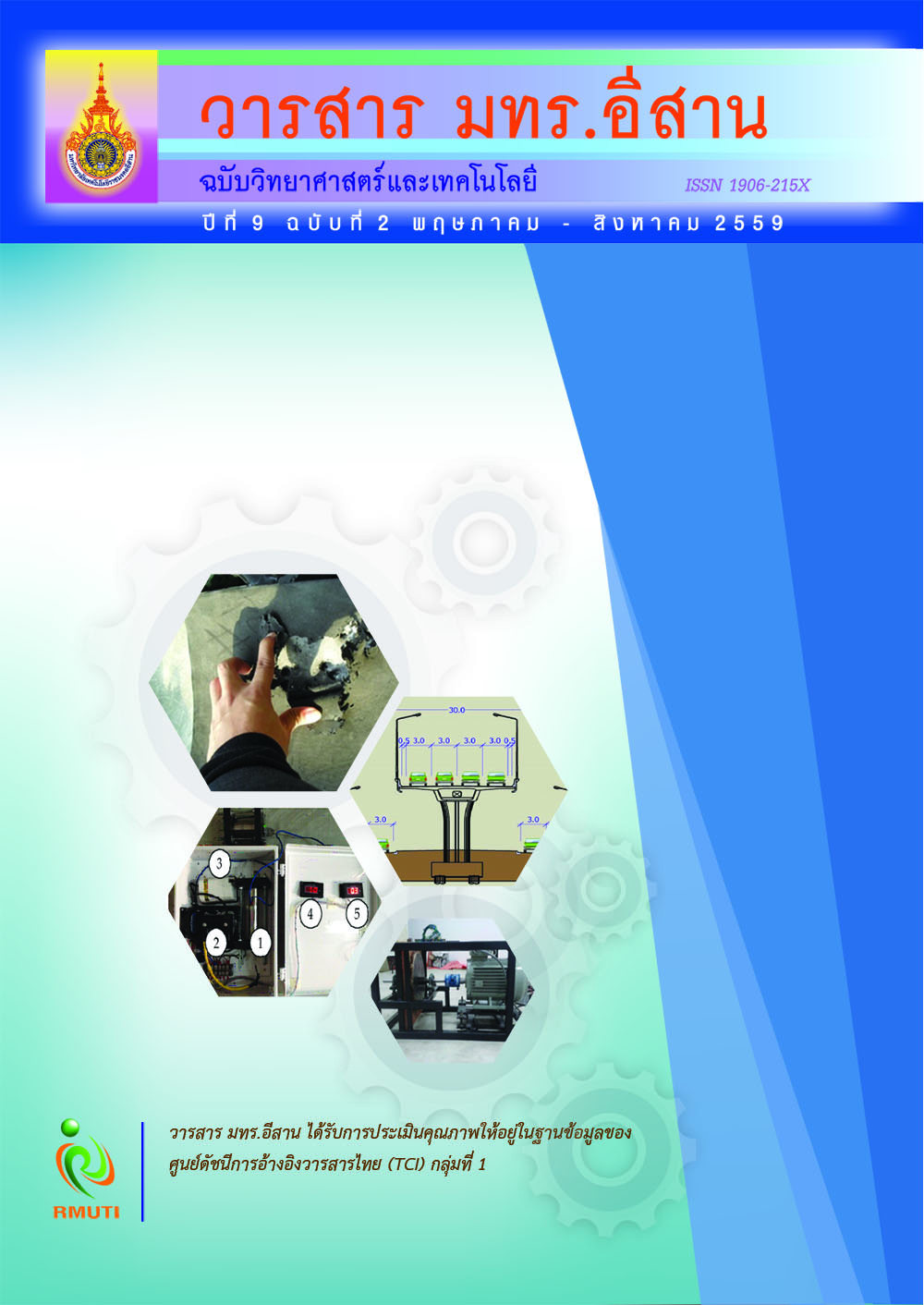การจำลองผลการกระจายตัวของสนามแม่เหล็กในเครื่องกำเนิดไฟฟ้า แม่เหล็กถาวรด้วยวิธีไฟไนต์อิลิเมนต์ Simulation of Magnetic Field Distribution in Permanent Magnet Generator by Using Finite Element Method
Main Article Content
Abstract
บทคัดย่อ
บทความนี้ได้นำเสนอแบบจำลองทางคณิตศาสตร์ของสนามแม่เหล็กในเครื่องกำเนิดไฟฟ้าแม่เหล็กถาวร
ซึ่งแสดงอยู่ในรูปของสมการเชิงอนุพันธ์อันดับสอง โดยได้วิเคราะห์การกระจายตัวของสนามแม่เหล็กที่
โรเตอร์และสเตเตอร์ซึ่งแสดงในรูปแบบของศักย์เชิงเวกเตอร์แม่เหล็ก โดยนำค่าความหนาแน่นกระแส
จากการทดสอบโหลดขนาด 300 W และการต่อลงดินของโครงเครื่องกำเนิดไฟฟ้าทำให้มีค่าศักย์เชิงเวกเตอร์
แม่เหล็กมีค่าเป็นศูนย์มาใช้ในการกำหนดเงื่อนไขขอบเขต ในการจำลองผลได้ประยุกต์ใช้ระเบียบวิธี
ไฟไนต์อิลิเมนต์ที่พัฒนาขึ้นด้วยโปรแกรมคอมพิวเตอร์โดยพิจารณาระบบเป็นแบบ Time Harmonic
พร้อมแสดงผลทางกราฟิกของค่าศักย์เชิงเวกเตอร์แม่เหล็กและสนามแม่เหล็กที่เกิดขึ้นในเครื่องกำเนิด
ไฟฟ้าแม่เหล็กถาวรเพื่อนำไปใช้ในการออกแบบเครื่องกำเนิดไฟฟ้าให้มีประสิทธิภาพที่สูงขึ้น
Abstract
This paper proposes a mathematical model of magnetic fields in Permanent Magnet
Generator by using a set of second-order partial differential equations. The analysis of
the distribution of magnetic field in rotor and stator, show in the form of the magnetic
vector potential. Take the current density of 300 watt load test Watt and the grounding
of the generator frame has the magnetic vector potential of zero value used to determine
the boundary conditions. Computer-based simulation utilizing finite element method
in the time harmonic mode, instructed in computer programming environment with
graphical representation for magnetic field strength was evaluated. The simulation results
showed that the magnetic vector potential and magnetic field distribution in the
permanent magnet generator can be used in designing the generator of a higher efficiency.
Article Details
References
Eakburanawat, J. and Thongsongyod, C. (2010). The Efficiency Test of the Permanent Magnet Generator with Resin Case for a Wind Turbine. In Proceeding of the 4th Rajamangala University of Technology Conference. (RMUTCON 2011)
Meesuk, P., Kulworawanichpong, T. and Pao-la-or, P. (2011). Magnetic Field Analysis for a Distribution Transformer with Unbalanced Load Conditions by Using 3-D Finite Element Method. World Academy of Science Engineering and Technology. Issue 60. pp. 339-344
Pasusarittakorn, A., Chaitep, A. and Chaochana,T. (2008). Effect of Enhance Magnet Force Plate to Electric Power Generated by Permanent Magnetic Generator. In proceeding of the 22nd Conference on Mechanical Engineering Network of Thailand (ME-NE TT22). pp.99-103
Preston, T. W., Reece, A. B. J. and Sangha, P. S. (1988). Induction Motor Analysis by Time Steppingtechniques. IEEE Transactions on Magnetics. Vol. 24. No. 1. pp. 471-474
Ruksakulwittaya, J., Chiangjukong, T., Khoomsiriwong, W., Eakburanawat, J. and Meesuk, P. (2014). Analysis of Efficiencyof Permanent Magnet Generator Effect from an Air-Gap. In Proceedings of The 7th Thailand Renewable Energy for Community Conference (TREC-7)


